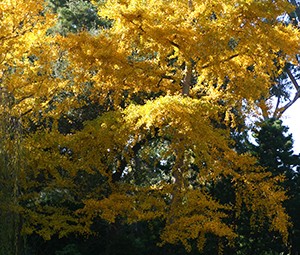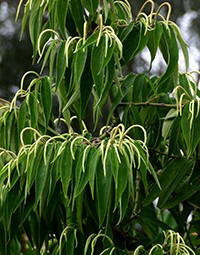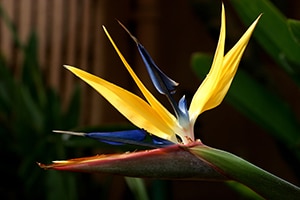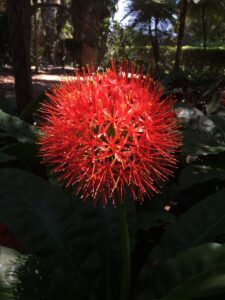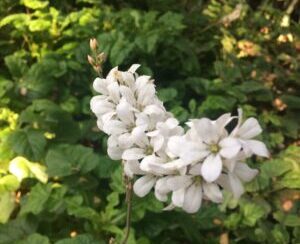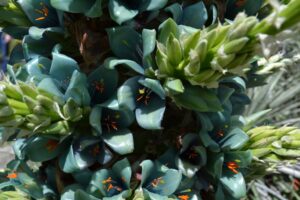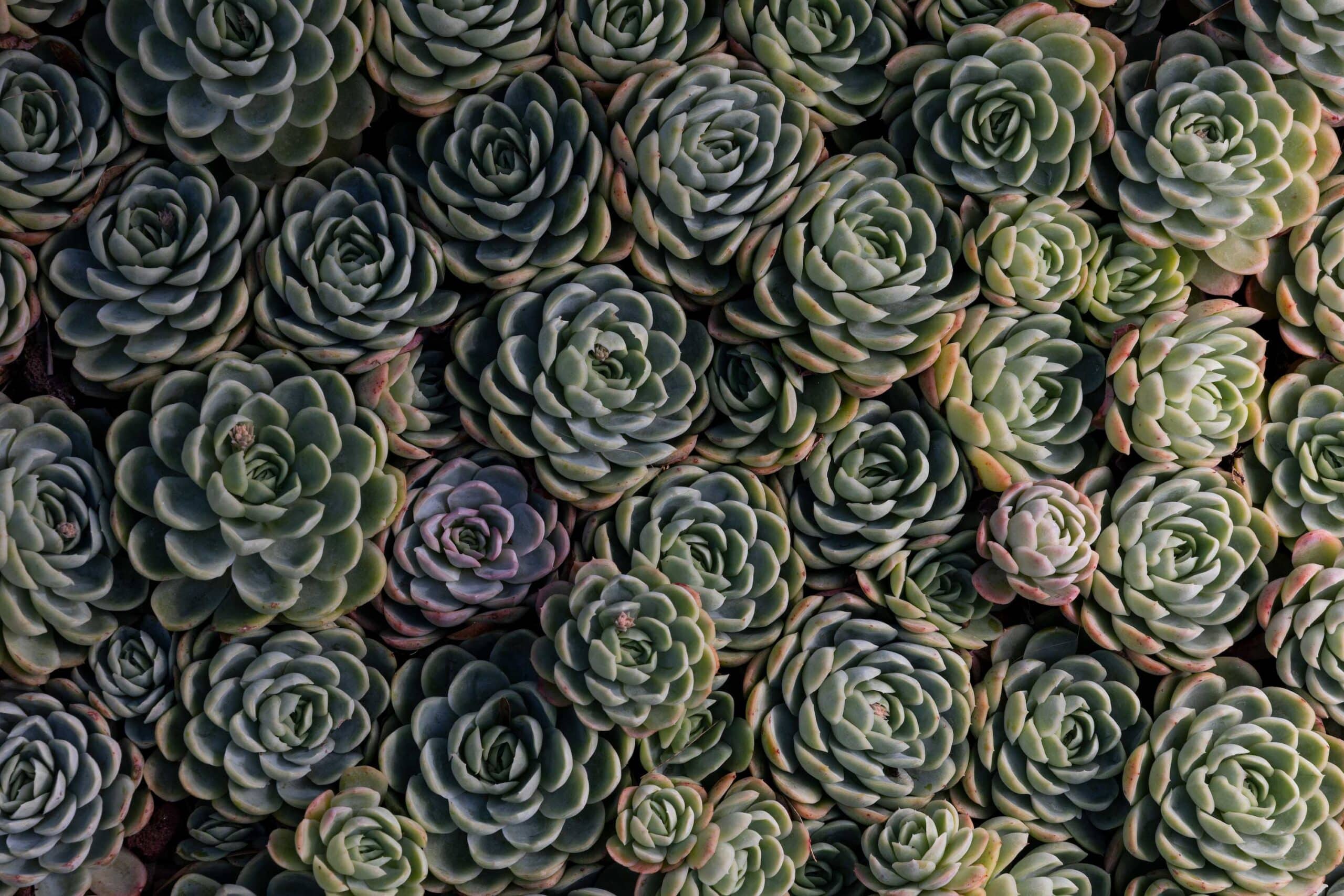
Plant Highlights
Plant Highlights
-
Ananas comosus var. bracteatus ‘Tricolor’
variegated pineapple
Highlight Month:
Nativity:
Garden Origin
Growth Habit:
This plant can spread up to 5’ wide and displays more pink coloration with additional sun.
Growing Requirements:
Sun to part sun.
Features:
This ornamental pineapple is sure to catch your eye with its striated pink, green, and yellow leaves. Plants at Lotusland are vegetatively propagated from offsets removed from the crown of the pineapple, which is composed of multiple fruits clustered together.
Where at Lotusland:
Upper and Lower Bromeliad Gardens
-
Aloe ‘Tingtinkie’
Highlight Month:
Nativity:
Garden Origin
Growth Habit:
Six to twelve-inch rosettes will form a mounding colony with light green leaves featuring orange tips. Large bicolored inflorescences emerge in winter with reddish buds opening creamy yellow.
Growing Requirements:
Full sun, well-drained soil
Features:
This hybrid aloe was created by renowned South African botanist/horticulturist Cynthia Giddy at her Umlaas Aloe Nursery in 1973. ‘Tingtinkie’ is thought to be a term of endearment for “dinky thing.”
Where at Lotusland:
Aloe Garden
-
Encephalartos horridus
Eastern Cape blue cycad
Highlight Month:
Nativity:
South Africa (Eastern Cape)
Growth Habit:
A small, low-growing cycad known for its attractive, heavily armed, blue-green leaves.
Growing Requirements:
Full sun, well-drained soil.
Features:
This species is native to the Eastern Cape of South Africa and has been listed as endangered by the IUCN since 2003. It is only known from 10 locations between Port Elizabeth and Uitenhage. Curation staff at Lotusland propagate these plants from our living collection by collecting pollen from a male cone and injecting it into a receptive female cone to produce viable seed.
Where at Lotusland:
Cycad Garden
-
Rosmarinus officinalis ‘Lockwood de Forest’
Lockwood de Forest rosemary
Highlight Month:
September
Nativity:
Garden Origin
Growth Habit:
This prostrate cultivar of rosemary was discovered as a seeding in the Santa Barbara garden of Lockwood and Elizabeth de Forest. This rosemary grows only 2 feet tall, but its low-growing branches can reach a length of 6 to 8 feet, making it a great choice as either a groundcover or a cascading accent over a rock wall.
Growing Requirements:
Full sun, well-draining soil.
Features:
Madame Ganna Walska consulted with Lockwood de Forest to design the orchard, succulent garden, and main house cacti plantings at Lotusland. Blue flowers emerge in the spring, fall, and winter and resemble “the color of the old French air force uniform,” according in Elizabeth de Forest.
Where at Lotusland:
In pots on the Parterre.
-
Ginkgo biloba
maidenhair tree
Highlight Month:
November
Nativity:
Southeast China. Only two localities in China still hold wild populations of this ancient tree, but it has been a sacred plant for centuries and was probably saved from extinction through cultivation.
Growth Habit:
This deciduous tree can grow 65 to 80 feet in height. Leaves are fan-shaped, resembling the leaflets of maidenhair fern, thus the common name. Most cultivar selections of this species are male since female plants drop seeds with a malodorous fruit-like covering.
Growing Requirements:
Ginkgo require consistent moisture and can grow in full sun to partial shade. They are remarkably unaffected by urban smog and have been widely planted in Asia as street and park trees.
Features:
The fan-shaped leaves and turn a buttery yellow-gold in late fall. Ginkgo biloba is the only surviving species in its division Ginkgophyta. Fossil evidence suggests Ginkgo has remained generally unchanged for the last 270 million years and was once native to North America and throughout the world. Ginkgo biloba is widely grown in China and Japan for its medicinal, food and timber value. Female trees produce an edible seed covered in a nauseatingly smelly fleshy structure. Once cleaned, these seeds are roasted or included in bird’s-nest soup. Standardized extracts from the leaves are used to treat difficulties of concentration and memory, lack of energy, decrease physical performance, anxiety, dizziness, tinnitus and headache.
Where at Lotusland:
There are several mature trees, including one female plant, in the Japanese Garden. Another specimen has been pruned and trained in the niwaki style.
-
Piper aduncum
spiked pepper
Highlight Month:
June
Nativity:
Mexico to Tropical America
Growth Habit:
This peppercorn relative forms a large shrub/small tree. In summer the white “rat tail” inflorescences are eyecatching.
Growing Requirements:
While native to the tropics and subtropics, this evergreen shrub is quite drought tolerant. It thrives in full to partial sun.
Features:
There are many indigenous names for this plant, but “matico” is widely used in South America where it is used medicinally as a styptic or anti-hemorrhagic remedy.
Where at Lotusland:
At the edge of the Cycad Garden nearest the Tropical Garden.
-
Strelitzia reginae ‘Mandela’s Gold’
Mandela’s Gold yellow bird-of-paradise
Highlight Month:
February
Nativity:
Garden Origin (Kirstenbosch National Botanical Garden, South Africa)
Growth Habit:
Evergreen, clump-forming, 4-5′ tall
Growing Requirements:
Bird of paradise plants are quite drought tolerant once established. Plant in full sun near the coast or partial shade in hotter regions.
Features:
This yellow-flowering form was created at Kirstenbosch Botanical Garden by careful cross-pollination of rare yellow flowers on the typically orange-flowering species.
Where at Lotusland:
At the top of the Parterre in front of the wrought iron wishing well, adjacent to the circular pebble mosaics.
-
Scadoxus multiflorus ssp. katherinae
blood lily
Highlight Month:
July
Nativity:
South Africa
Growth Habit:
Scadoxus multiflorus ssp. katherinae multiplies quickly via underground rhizomes arising from the parent bulb and goes dormant in the winter months. In the summer, 1’ tall stems bear large globes of pink-red flowers that resemble an exploding firework, and the flowers are followed by decorative red fruits.
Growing Requirements:
Plant the bulbs 2 feet apart in light to full shade. Water regularly during the spring/summer growing season. Scadoxus is sensitive to frost, however in colder regions the bulbs can be stored indoors for the winter dormant season. They will also grow well as a container plant.
Features:
This bulb in the Amaryllidaceae family is from coastal and swamp forests in the Eastern Cape of South Africa. The common name “blood lily” references the red-speckled bulb. The subspecies katharinae is a more robust plant that grows in wetter regions than the straight species (ssp. multiflorus).
Where at Lotusland:
Fern Garden
-
Francoa ramosa
bridal wreath
Highlight Month:
August
Nativity:
Chile
Growth Habit:
Francoa is a perennial plant which produces a clump of wavy-edged basal leaves, each to one foot long, with the plant itself reaching 1-2 feet high. It spreads by rhizomes, and is easily divided.
Growing Requirements:
Francoa grows best in partial shade with moderate water. It will tolerate temperatures slightly below freezing.
Features:
In summer, a profusion of multi-stemmed flower spikes rise up over the foliage on stalks up to 3 ft tall. Each stalk bears many small flowers which may be pure white or blushed with pink. The blooms made good cut flowers.
Where at Lotusland:
A planting of Francoa is growing in the Fern Garden.
-
Puya alpestris
sapphire tower
Highlight Month:
July
Nativity:
The Andes of southern Chile
Growth Habit:
This plant forms clumps 4-5 foot tall with the foliage in many rosettes. The leaves are very narrow with spiny edges and are silver on the underside. The clumps can reach ten feet across.
Growing Requirements:
This dry-climate bromeliad does best in full sun to light shade. It is drought tolerant, needing little water. It adapts to poor soils and prefers good drainage.
Features:
In spring the plant produces five foot tall stalks bearing clusters of bell shaped flowers that are an unusual metallic turquoise. In the center of the flower are bright orange anthers. The bare lateral branches on the flower spikes provide perches for pollinating birds.
Where at Lotusland:
A very large clump of Puya alpestris grows in the Insectary Garden.


